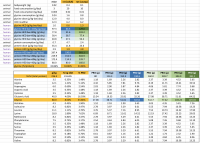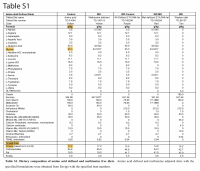haidut
Member
There are also findings that glycine is protective against mercury and iron toxicity. The studies mention glycine relieving oxidative stress, but taken together, it is difficult so far to see a comprehensive scheme for glycine’s protective actions. These are tissue, rather than organism, studies.
Modulation of mercury-induced mitochondria-dependent apoptosis by glycine in hepatocytes. - PubMed - NCBI
“Glycine treatment suppressed these apoptotic events, signifying its protective role in Hg-induced hepatocyte apoptosis as referred by reduction of p38, JNK and ERK MAPK signaling pathways. Results suggest that glycine can modulate Hg-induced oxidative stress and apoptosis in hepatocytes probably because of its antioxidant activity and functioning via mitochondria-dependent pathways….”
Iron induces hepatocytes death via MAPK activation and mitochondria-dependent apoptotic pathway: beneficial role of glycine. - PubMed - NCBI
“…iron (FeSO₄) intoxication caused NF-κB activation as well as the phosphorylation of p38 and ERK MAPKs. Iron (FeSO₄) administration also disrupted Bcl-2/Bad protein balance, reduced mitochondrial membrane potential, released cytochrome c and induced the activation of caspases and cleavage of PARP protein….Glycine (10 mM) supplementation… reduced all the iron (FeSO₄) induced apoptotic indices.
Glycine stimulates protein synthesis and inhibits oxidative stress in pig small intestinal epithelial cells. - PubMed - NCBI
“...glycine inhibited (P < 0.05) activation of caspase 3 by 25% and attenuated… apoptosis by 38% in intestinal porcine epithelial cell line 1 cells through promotion of reduced glutathione synthesis and expression of glycine transporter 1 while reducing the activation of extracellular signal-regulated kinases, c-Jun amino-terminal kinases, and p38 protein in the mitogen-activated protein kinase signaling pathway.”
Thanks for the additional pointers.
I suspect glycine chelates heavy metals, as several amino acids have been shown to do in vivo. Will see if I can find something specific on chelation and post it here.



